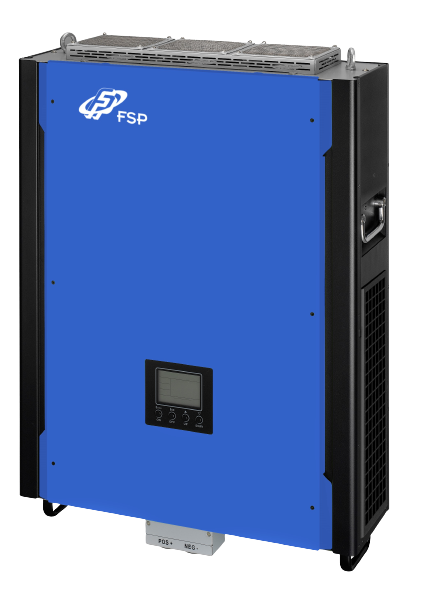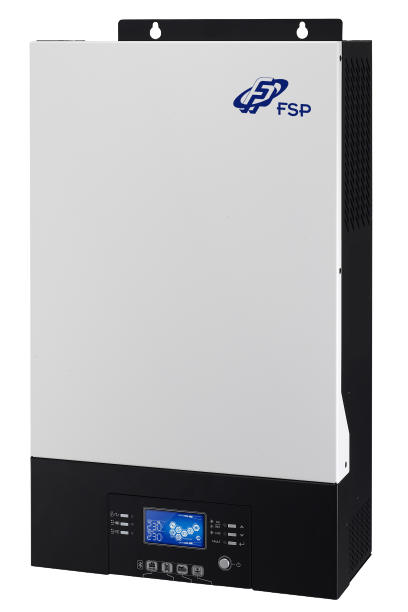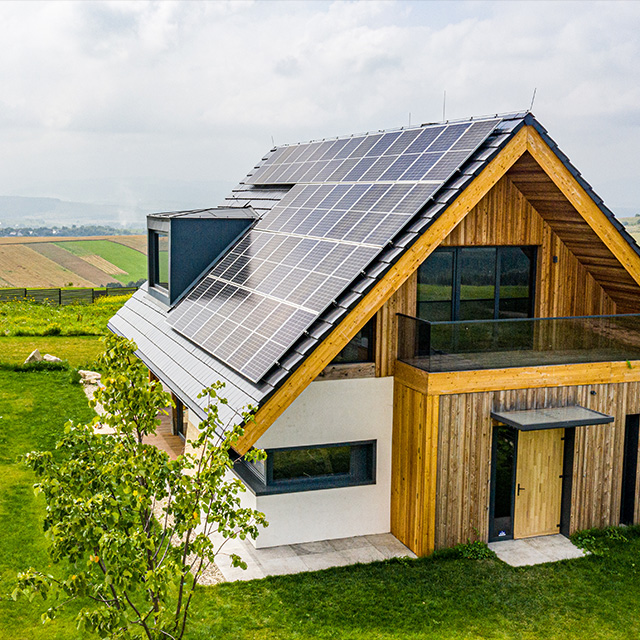Home Energy Storage Explained: Solar Storage Principles, Benefits, and Buying Guide
Overviews
- What are Energy Storage Systems for Homes?
- Are Energy Storage Systems for Homes worth buying?
- How to choose Energy Storage Systems for Homes?
- FSP Home Energy Storage System – Key Features
- FSP’s Recommendations!
- Conclusion
Author: FSP Group
With 136 countries pledging to achieve net-zero emissions by 2050, Taiwan has also announced its “Taiwan 2050 Net-Zero Emissions Roadmap” in March 2022. The plan outlines the trajectory toward net-zero emissions based on climate legislation and technological innovation. Although Taiwan originally aimed to reach a 20% renewable energy share by 2025, rising electricity demand and slower-than-expected green energy development have pushed this target to October 2026.
As corporate electricity consumption continues to increase and renewable installation progress lags behind, many people wonder: How can we contribute to the 2050 Net Zero goal? In fact, more and more households are installing solar panels to generate their own power. However, to truly maximize the efficiency and stability of solar energy, the Home Energy Storage System (HESS) plays a crucial role.
This article will explain how home energy storage works, its benefits, and the key factors you should consider when choosing the right system — helping you build a smarter and more sustainable green-energy home.
What are Energy Storage Systems for Homes?
Energy Storage Systems (ESS) for homes are systems which use energy storage technology to store generated electricity for the household’s future use. ESS can help meet the gap between electricity generation and demand by charging during off-peak hours and outputting electricity during peak hours. We can think of ESS as a water tower: In the past, water storage was the only form of storage everybody used. Now that elevators, electric vehicles, and even electronic locks have become a part of our everyday life, the consequences of power outages have become immeasurably greater as well.
In recent years, there has been an upward trend in the number of power outages caused by extreme climate around the world. People are becoming more aware of climate change and are hence more willing to install energy storage systems in response. Excess electricity can be stored and used to keep emergency and medical facilities in operation in the event disasters disrupt power supplies.

Image: Illustration of Energy Storage System for Home in action
Are Energy Storage Systems for Homes worth buying?
There is no cut‑and‑dry answer to the question of whether an ESS is worth buying. Factors to consider include affordability and practicality. For example, if you have a home solar power system, then adding an ESS means electricity generated during the day can be used at night. You will not only be running on green energy, but also reduce energy losses in the electrical system, hence lowering the overall cost of electricity and saving on your power bills.
That’s not all to it. If you apply for a feed-in connection to the Taipower grid, you can then sell your excess electricity to Taipower as another way of generating a return on your investment. Nevertheless, the real deciding factor is your own level of dependence on electricity. The true value of an ESS may lie in how much loss or damage an ESS can help you avoid during a power outage.
How to choose Energy Storage Systems for Homes?
How should we go about choosing an ESS? We’ve come up with a list of five essential elements you may to consider to help you pick the right ESS for your home!
-
Choosing ESS capacity
Like water towers, size determines capacity. ESS capacity determines how much electricity it can store, and ESS capacity shares a similar unit to the kWh that appears on your home power bill. Home ESS are usually rated between 5 to 15 kW. Choosing a large‑capacity ESS may give you additional flexibility on how electricity stored in the system can be used should unexpected situations develop. -
Choose products with warranty
Check the products and services supplied by the system vendors before purchasing them. In addition to comparing the prices and specifications of different vendors, good after-sales service and maintenance are also important as well. ESS brands usually have a warranty period of 5 to 10 years. -
How the surrounding environments affect the system
When selecting an ESS, you should take your surroundings into account. This includes the ESS’s operating temperature, waterproofing rating, and humidity. -
Pay attention to ESS energy loss
Power supplied by the electrical system is usually converted from DC to AC for home use. Some energy is lost as heat in the conversion process. Losses usually range between 10% to 20%, so DC‑to‑AC efficiency is between 80% ~ 90%. -
Choose a DoD ESS
There is usually some residual energy left when an ESS is fully discharged. Depth of Discharge (DoD) refers to the maximum amount of energy that can be safely discharged. ESS with higher DoDs are usually safer.
FSP Home Energy Storage System – Key Features
1. Supports Grid-Tied, Off-Grid, and Hybrid Modes
The inverter series supports multiple operating modes including grid-tied, off-grid, and grid-tied with backup, allowing users to switch modes based on self-consumption, energy selling, or backup needs.
2. Pure Sine Wave Output with High Efficiency
Provides pure sine wave output suitable for home appliances, IT devices, and backup systems, with high conversion efficiency to reduce power loss.
3. Energy Storage Integration & Battery Priority Settings
Users can configure “battery priority” or “utility priority” modes for self-consumption, grid feedback, or backup power. Supports both battery and solar panel dual input.
4. Scalable Parallel Operation Design
Multiple models support parallel operation — up to 6 units — ideal for large home systems, multi-unit residences, or small commercial energy storage setups.
5. Smart Monitoring & Remote Management
Equipped with LCD display, communication interfaces (USB, RS-232, CAN/Modbus), and monitoring software for real-time tracking of power generation, storage, and consumption.
6. Suitable for Home Rooftops, Off-Grid Living & Backup Power
Ideal for residential rooftop solar systems, off-grid homes, camping setups, and remote area backup power — enhancing energy independence and reducing blackout risks.
FSP’s Recommendations!
Now that we know what ESS is, let’s now look at the ESS products from FSP. FSP started out producing power supply units, and is now developing new energy technologies. To support the goal of net zero emissions by 2050, FSP and its partners have focused their efforts on ESS and ESS solutions. Below are two FSP ESS products for home use:
- FSP PowerManager Hybrid 10/15kW: This hybrid product can operate in either off‑grid or grid‑connected mode. In addition to offering capacities of 10kW/15kW, it can also power 6 devices in parallel. Its operating status can be monitored in real-time with software to ensure its safety, and it features a high conversion efficiency of up to 96%, waterproofing rating of IP20, and an operating temperature range between -10 ~ +55 degrees Celsius. These features make such a high-capacity, high-performance product well-suited to users in Taiwan like us.

Image: PowerManager Hybrid (Product Introduction)
- FSP PowerManager Offgrid III: The product is an off-grid ESS. Although its capacity is a mere 5 kW, it outputs a steady Sine wave and can be monitored on a mobile phone through Bluetooth. This product also supports generators and cold starts. The operating temperature range and waterproofing rating of this product are between -10 ~ +55 degrees Celsius and IP20, respectively, and it boasts a high conversion efficiency of 90% to 93%, thus making it suitable for temporary backup applications.

Image: PowerManager Offgrid III(Product Introduction)
Conclusion
The deluge of electrical equipment in our modern lifestyle means electricity is now an indispensable resource. Amidst a backdrop of energy shortages, people are now increasingly turning to green energy and energy storage. Imagine this: One day, we can become completely self-sufficient in electricity by combining our rooftop solar system with energy storage equipment. We can also use the electricity as a backup power supply, or even sell it to Taipower. This will make our lives easier and thus provide more assurance. We believe that ESS for homes and businesses will one day become as common as water towers!
| FSP Smart Microgrids Microsite |
About FSP
FSP Group is one of the global leading power supply manufacturer. Since 1993, FSP Group has followed the management conception “service, profession, and innovation” to fulfill its responsibilities as a green energy resolution supplier.



